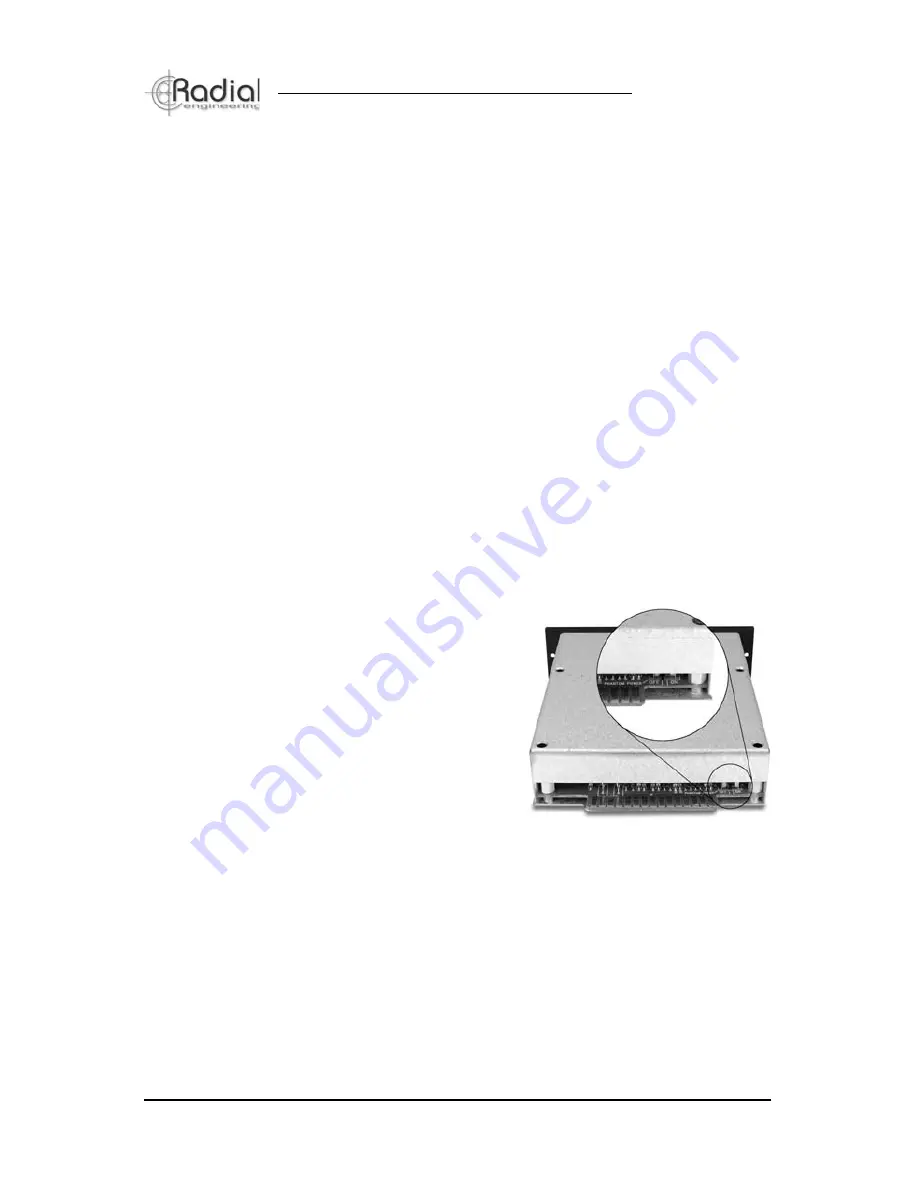
Radial Engineering Ltd.
JDV-Pre
™
500 Module
True to the Music
®
6
Using an active acoustic guitar
As described above, most acoustic guitars for stage use are outfi tted with some form of
transducer and a built-in battery powered preamp. These are designed to be plug and play
easy to use, and although they do not necessarily sound the best for studio recording, they
are extremely functional for live performance. In the studio they are great for tracking song
ideas or recording demos. Those that simply want to use their guitar’s built-in preamp with the
JDV-Pre will benefi t from the huge internal rail voltage the 500 series provides with greater
dynamics, headroom and lower distortion.
Using a microphone
There is no denying… capturing the sound of the instrument with a high quality condenser
microphone is just about as good as it gets. The real magic lies, not merely with the choice of
mic, but the marriage with the preamp you use. The JDV-Pre’s zero-feedback front end Class-
A circuit sounds nothing short of remarkable. In fact it sounds so good; don’t be surprised
if you end up using the JDV-Pre as your go-to mic preamp for vocal tracks too! It sounds
fantastically warm and natural and will surely captivate your senses as you start using it.
What truly makes it a marvel is the circuit design and the addition of an old school Hammond
broadcast transformer. Transformers naturally compress the sound. This is because
transformers do not so much distort, they saturate. In other words, as they reach their
maximum signal handling capacity, instead of going from say 1% to 100% distortion like an
active circuit, the distortion increases gradually. They naturally compress to create a sonic
effect that folks refer to as “vintage”. When used on acoustic instruments that are typifi ed
with fast transient peaks such as a banjo, acoustic guitar or mandolin, the transformer gently
smoothes out the tone.
Connection is made using the rear panel XLR
input on your 500 series rack or Workhorse. The
JDV-Pre is well suited to accommodate dynamic,
ribbon and condenser microphones. To active
48V phantom power, you merely set the phantom
switch adjacent to the card edge connector to ON
before you plug it into your rack. Although phantom
power will not harm dynamic microphones, most
engineers tend to turn it off when not in use. This
helps reduce the pops that are associated when
plugging in equipment.
Note that if the Drag Control is turned on, it will affect the load on the microphone. For fun,
try increasing or decreasing the load as you test various microphones. You may fi nd that the
effect can be very pleasing on some instruments.
Using the 180º invert switch
A wonderful feature built into the JDV-Pre is the invert switch. This reverses the electrical
polarity of the signal by 180º, essentially putting it out of phase. The most common application
for this function when recording is combining two mics to create a stereo fi eld. Sometimes,
fl ipping the polarity can bring certain frequencies in phase resulting in better tone.
Another less known application has to do with using the 180º invert switch to eliminate room
resonance. This is primarily applied in live performance environments where the sound from
the PA system may be interfering with echo in the room. This can create a hot spot (room












